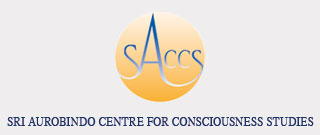WRITINGS BY THE MOTHER
© Sri Aurobindo Ashram Trust
28 March 1956
"If a departure from the world and its activities, a supreme release and quietude were the sole aim of the seeker, the three great fundamental realisations [Note: Realisation of the Immanent Divine, the Cosmic Divine and the Transcendent Divine or Nirvana.] would be sufficient for the fulfilment of his spiritual life: concentrated in them alone he could suffer all other divine or mundane knowledge to fall away from him and himself disencumbered depart into the eternal silence. But he has to take account of the world and its activities, learn what divine truth there may be behind them and reconcile that apparent opposition between the Divine Truth and the manifest creation which is the starting-point of most spiritual experience."
—The Synthesis of Yoga, p. 110
I don't understand the meaning. Why is this opposition the starting-point of spiritual experience?
What is ordinarily called a spiritual experience is the intense need for something other than the life one lives, and most often this awakens after difficulties or disappointments or pain or sorrow, all these things which bring unhappiness and at the same time arouse the aspiration for a better state. It is this that is generally at the root of spiritual experiences: it is something negative.
The positive need to know the Divine and unite with Him usually comes much later. I say usually; there are exceptions, but usually it is at first a flight from the miseries of life which pushes you towards the spiritual life. Very few people, if they were in a state of perfect inner and outer harmony and nothing unpleasant or painful happened to them, very few people would [old p. 97]think of [new p. 97]the Divine; they would not concern themselves with Him, they would be content with the half-measures of ordinary things and would not seek for an absolute. That is what Sri Aurobindo means.
But, when one has found this spiritual life, one realises that it is everywhere behind all appearances, as well as directly, without appearances. Behind appearances it also exists; this is what he says: we must find and reconcile these oppositions. There is a place or a state of consciousness in which they are reconciled.
But, first, one must go like this (a gesture of ascent), and then one comes back like this (a gesture of descent). There!
—Collected Works of The Mother, First Edition, Volume 08, pp. 96-97

